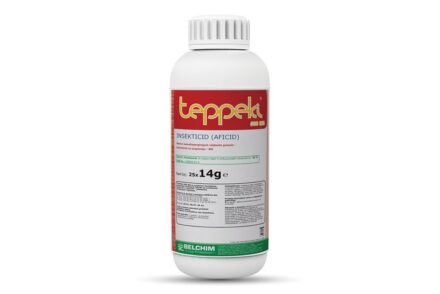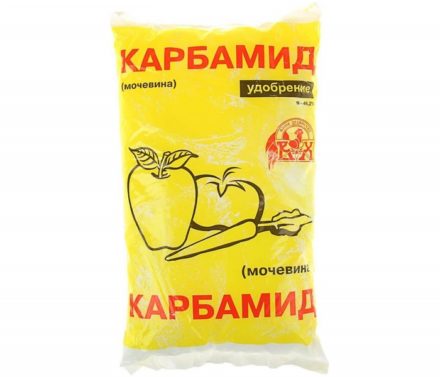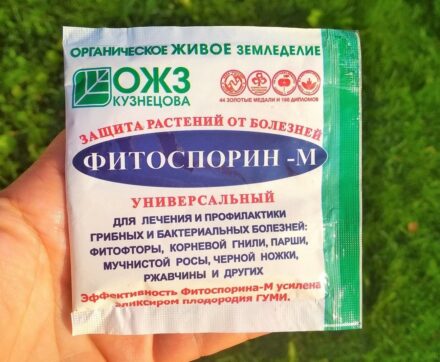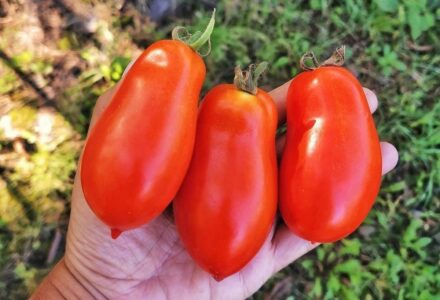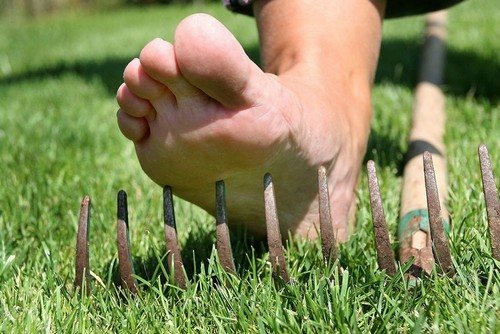Batrider is one of the new generation of products developed to protect vegetable, fruit and berry crops and ornamental crops from numerous pests. Unlike other similar products, the universal insecticide works quickly, permanently ridding affected plants of harmful insects.
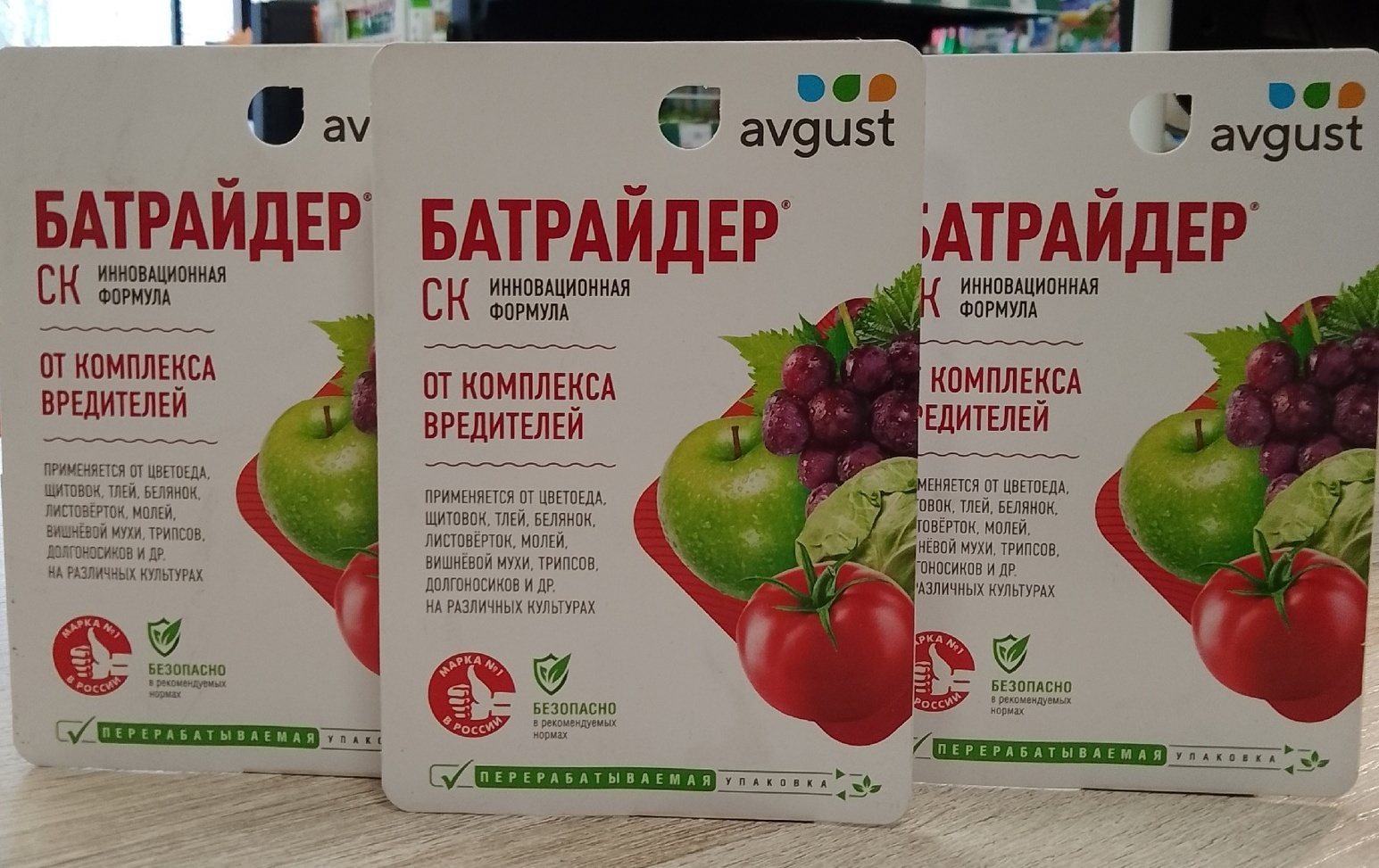
- Description
- Compound
- Operating principle
- Release form
- What pests are they used for?
- For what crops can it be used?
- Processing times
- Instructions for use
- Under what conditions can plants be processed?
- How to divorce
- Application for vegetable crops
- Application for fruit and berry crops
- Application for flowering and ornamental plants
- Features of processing indoor plants
- Analogs
- Compatibility with other drugs
- Security measures
- Storage conditions
- Reviews
Description
Contact insecticide of systemic and intestinal action Batrider is an odorless concentrated suspension of a uniform bright pink color, enclosed in plastic bottles. To prepare the working solution, the product must be diluted in accordance with the attached instructions.
Batrider is recommended to be used to prevent the mass spread of pests, combat adult individuals and their larvae at any stage of the life cycle. The result of the effect can be observed within 2-3 hours after treatment. The death of the entire colony of parasites occurs within a day.Plant protection lasts up to 14 days. If during this time young caterpillars hatch from the larvae, or pests fly in from a nearby area, they will immediately die if they eat the poisoned plants. Repeated spraying is rarely required, only during the season of prolonged rains, which favors the growth of fungal infections and the proliferation of sucking parasites.
The batrider is equally active in any weather: in the heat, in conditions of high humidity, when the temperature drops, provided that the treatment was carried out according to the rules and no earlier than 3-4 hours before the rain. It has no complete analogues. The Batrider is suitable for pest control in all climatic zones of the Russian Federation.
Compound
The destructive effect of the innovative drug Batrider is based on a combination of 3 active components from the category of pyrethroids and neonicotinoids:
- Clothianidin at a concentration of 50 g/l;
- Imidacloprid at a concentration of 100 g/l;
- Alpha-cypermethrin at a concentration of 125 g/l.
Operating principle
Since Bathrider is a drug of contact-systemic and intestinal action, when processing crops it inevitably gets on the bodies of insects and penetrates into plant tissue, from where it enters the bodies of parasites along with food. Specifically, Imidacloprid, present in the drug, leads to an increase in acetylcholine in neuronal membrane cells to critical values. At the same time, Clothianidin and Alpha-cypermethrin suppress the production of the enzyme acetylcholinesterase, which can destroy this same acetylcholine. As a result, the potential and duration of the neuro-signal increase manifold, first causing overexcitation of the nervous system of insects, and after blocking the transmission of the nerve impulse - complete paralysis.
Release form
Batrider is available for retail (wholesale) sale packaged in 10 ml plastic bottles. Each package of the preparation comes with full information on the pests it is designed to combat, the method of diluting the concentrate, the consumption of the working composition, which crops and when should be sprayed. The manufacturer of the Batrider preparation is the company "August", known to the Russian consumer for such insecticides and herbicides as "Tanrek", "Biotlin", "Tornado" and others.
What pests is it used against
The manufacturer guarantees the high efficiency and effectiveness of the Batrider preparation in the fight against 30 types of pests of flower, fruit and berry and vegetable crops:
- grape leaf roller,
- thrips,
- weevil,
- California scale,
- Colorado potato beetle,
- turnip white butterfly,
- moth,
- codling moth,
- cruciferous flea beetle,
- mealybug,
- apple blossom beetle,
- leafhopper,
- cotton and cabbage moth,
- aphid,
- whitefly,
- onion, carrot and cherry fly,
- spider ticks, etc.
Batrider is not used for the prevention and treatment of fungal, bacterial and viral plant infections, since the purpose of insecticides is to combat pests.
For what crops can it be used
The manufacturer claims that it is enough to have only one product in the house - Batrider, to protect all existing plantings. The drug is unique in that it is suitable for disinfestation of indoor plants, flowers, ornamental shrubs, vegetable and garden crops. In particular:
- bird cherry,
- pears,
- mulberries,
- cherries,
- sloes,
- cherries,
- apple trees,
- plums,
- currants,
- honeysuckle,
- gooseberries,
- blackberries,
- raspberries,
- strawberries,
- wild strawberries,
- grapes,
- eggplants,
- orchids,
- roses,
- clematis,
- peonies,
- tulips,
- cucumbers,
- cabbage,
- tomatoes,
- peppers,
- carrots,
- potatoes, etc.
Processing times
It is customary to treat strawberry beds, strawberries, grapes, trees, shrubs and perennial flowers with Batrider during the growing season. That is, when plants move from a dormant state (wintering) to the stage of active development (usually in the spring, into the phase of swelling and bud opening). Depending on the growing region, variety and type of crop, it may occur at different times, but it is advisable to treat the plantings before the flowering period. To do this, choose a period of time when weather conditions are most favorable.
As for vegetable crops (greenhouse and open ground), their development cycle is fundamentally different from perennials. Treatment of cucumbers, tomatoes, zucchini, eggplants, etc., with the Batrider insecticide is usually carried out between the formation of buds and the beginning of fruiting.
Due to the fact that the three-component preparation is extremely resistant to environmental influences, it is dangerous to carry out treatment immediately before harvesting!
Instructions for use
Before starting pest control work, you need to study the attached instructions and strictly follow the requirements and standards specified in the leaflet. No matter how safe Batrider is for humans, exceeding the permissible concentration is always a risk of increasing toxicity. The hazard class of the insecticide was calculated by specialists from the August company based on many parameters. Increasing the dosage will not make it act faster or more aggressively, it will only increase consumption. This should be remembered.
When using the drug Batrider to combat harmful insects, one treatment per season is most often enough.
Under what conditions can plants be processed?
Crops are treated with Bathrider at a temperature of +12 – +25 °C, early in the morning or at sunset, in dry, windless weather. Spray the working substance using a spray bottle. In the direction away from you. Make sure that the spraying proceeds evenly and that no untreated areas are left. They try not to get on the soil (pesticides can stay in the ground for several decades). It's better to get to bed within an hour. For large areas - a maximum of 6 hours. This period of work with agrochemicals in the conditions of a private farm is considered the most optimal.
How to divorce
First, approximately 1 liter of water is poured into the sprayer container, then the required amount of suspension concentrate is added. Mix thoroughly until a pink solution of uniform consistency is obtained and clean water is poured in again, bringing the liquid to the required volume. The working composition should be used on the day of preparation. After daily exposure, the active components lose their strength.
Application for vegetable crops
When folk remedies do not work and the pest population threatens the vegetable harvest in the greenhouse and open ground, preventive measures are indispensable. In this case, it is better to spray all plants, both healthy and affected, with an insecticide, rather than individual bushes, in order to get rid of sucking parasites in one go.
Dosing and standard consumption of the drug Batrider for specific vegetable crops:
| Name | Object of destruction | Standard consumption | Method and terms of processing | Frequency of processing | Waiting period |
| Carrot | Fall armyworm butterfly larvae; carrot fly; slugs; carrot psyllid; and etc. | 2 ml/3 l water | Uniform spraying during the growing season. Spray at the rate of 3 l/100 m² | 1 | 7 days |
| Cabbage, Brussels sprouts, Savoy, cauliflower, kohlrabi, curly | Aphid; mole; bug; cabbage scoop; butterfly caterpillars; secretive proboscis; cruciferous flea beetle; naked slugs, etc. | 2 ml/3 l water | Uniform spraying during the growing season. Spray at the rate of 3 l/100 m² (area)
|
1
|
20
|
| Open ground and greenhouse varieties | Whitefly; melon and cotton aphids; stink bug; spider mite; thrips; nightshade miner, etc. | 3 ml/3 l water | |||
| Potato | Various types of cutworms; aphid; Colorado potato beetle, etc. | 1.5 ml/3 l water | |||
| Pepper | Whitefly; aphid; spider mite; scoop; Colorado beetle; naked slugs, etc. | 3 ml/l water | |||
| Eggplant | |||||
| Cucumbers in open and protected ground | Melon aphid; polyphagous cutworm caterpillars; spider mite; thrips; sprout midge; greenhouse whitefly, etc. | 5 ml/10 l water | Surface spraying during the growing season. Spray at the rate of 10 l/100 m² | 1 | 3 |
Application for fruit and berry crops
Tall fruit trees are treated with a pump sprayer with a telescopic handle so that the working solution can reach the entire crown, and not just the low-lying branches and trunk. To irrigate low-growing shrubs, a hand-held sprayer is sufficient.
Dosage and consumption rates of the drug Batrider for fruit trees and berry crops:
| Name of culture | Object of destruction | Consumption rates | Method and terms of processing | Processing frequency | Waiting period |
| Currants white, black and red | Leafroller; different types of aphids; currant bud mite; spider mite; gall midge; glassware; goldfish, etc. | 2 ml/10 l water | Spray from all sides during the growing season. Treat at the rate of 0.7-1 l/1 bush | 1 | 30 |
| Cherry | Cherry weevil; black aphid; shoot moth; ants; cherry pipe roller; spider mites, etc. | Spray from all sides during the growing season. The consumption of the working composition depends on the spreading of the crown and age: 1-5 l/1 tree (bush) | 20 | ||
| Apple tree, pear tree | California scale insect; different types of aphids; hawthorn; apple flower beetle; pear codling moth; sucker, etc. | ||||
| Gooseberry | Spider mite; gooseberry sawfly; moth; glassware; currant gall midge; fire, etc. | ||||
| Grape | Phylloxera; spider mite; cluster leaf roller; grape itch, etc. | Spray from all sides during the growing season. Spray at the rate of 0.5-1 l/bush | |||
| Strawberries, strawberries | Common leaf roller; bevelers; strawberry leaf beetle; spider mite; naked slugs; raspberry-strawberry weevil; slobbering pennitsa, etc. | Uniform spraying during the growing season. Spray at the rate of 0.2 l/1 m² |
After treatment with Batrider, fruits: vegetables, root vegetables, fruits and berries can be eaten after 20-30 days, but not earlier.
Application for flowering and ornamental plants
Flowerbed flowers and ornamental shrubs also suffer from all kinds of pests. Insects, eating green mass, not only spoil the appearance of plants, but also serve as a source of the spread of dangerous infections.
Dosage and consumption rates of the Batrider insecticide for perennial and annual open ground flowers and ornamental shrubs:
| Plant type | Object of destruction | Standard consumption | Method and terms of processing | Frequency of treatments | Waiting period |
| Annuals: dahlias; echinocystis; scabiosa; petunia, etc. | Various types of aphids; cutworm; earwig; greenhouse whitefly; click beetle; spider mite; click beetle; May beetle, etc. | 1 | 20 | ||
| 2 ml/3 l of water | |||||
| Uniform spraying during the growing season. Consumption rate of the working composition: 3 l/ 100 m²
|
Perennials: variegated and blue hosta; lilies; roses; astilbe; campanula; primrose; blue muscari; irises, etc. |
Ornamental shrubs: roses; jasmine; barberry; hydrangea; camellia; magnolia; witch hazel; almond; spirea; forsythia, etc.
2 ml/10 l of water
Uniform spraying during the growing season. Consumption of the working composition: 0.5-1 l/bush
- Features of processing indoor plants
- Evergreen indoor plants - monstera, orchid, poinsettia, croton, palms, trees and conifers (araucaria heterophylla, cypress, Japanese cryptomeria, etc.) - to a lesser extent, but also very often suffer from sucking parasites. They should be processed in the warm season (from spring to September) in the open air. Before starting, you need to thoroughly wash the foliage with warm water and laundry soap. Rinse, dry and only then, until the leaves are completely moistened, spray with a three-component preparation Batrider, diluted in a ratio of 0.2 ml per 1 liter of water. The treated plant should be left in the fresh air for a day.
- Analogues
- Batrayder has no complete analogues, but among insecticides there are agonists, which include the same chemicals that inactivate pests. For example, a nicotinoid from the class of neuroactive insecticides - Imidacloprid - is present in the formulas of other products that act similarly to the drug Batrader, these are:
- Corado,
Biotlin,
Tanrek,
Klubneshchit,
Tabu.Frequency of processing
Waiting period
Annuals: dahlias; echinocystis; scabious; petunia, etc.
Various types of aphids; scoop; earwig; greenhouse whitefly; clicking; spider mite; nutcracker; Khrushch etc.
2 ml/3 l water
Uniform spraying during the growing season. Working composition consumption: 3 l/ 100 m²
Perennials: variegated and blue hosta; lilies; roses; astilbe; campanula; primrose; muscari blue; irises, etc.
Ornamental shrubs: roses; jasmine; barberry; hydrangea; camellia; magnolia; witch hazel; almond; spirea; forsythia, etc.
Club shield,


